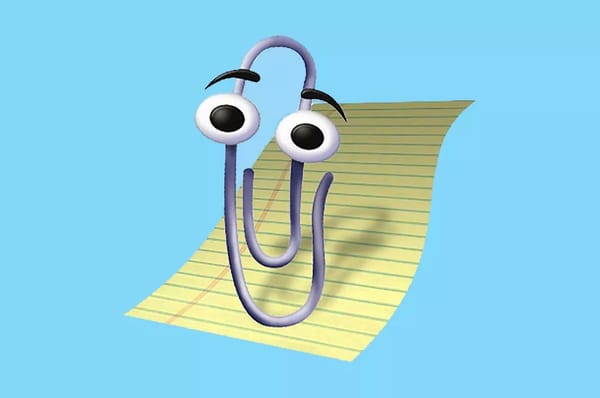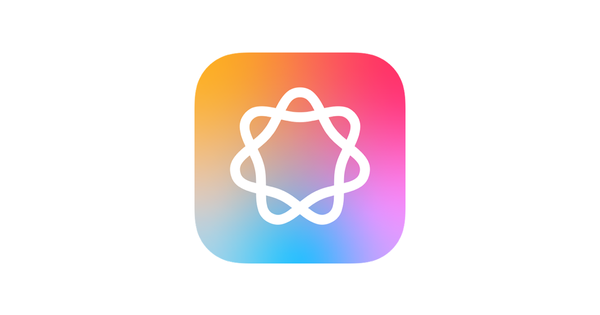The model-makers embrace brand building
Anthropic and OpenAI are trying to rewrite the AI narrative with nostalgia.

Hey! Long time no see.
I’ve been busy settling in at Granola as marketing hire number 1. It’s been great, and we’re hiring!
If you’re based in London (or travelling!) and fancy a pop-by, drop me an email at jack at granola dot so and we’ll arrange it.
I’m obsessed with the intersection of brand, marketing and technology. If you’re new here, that’s what I write about.
Last week was a pretty big week for all three, with both Anthropic and OpenAI both embracing brand-building in a big way.
Let’s dive in.
Keep thinking
Anthropic launched their brand platform last week: Keep thinking.
It comes with a beautifully nostalgic ad with some killer copywriting. You should take a moment to watch it:
There's never been a worse time (x6).
There’s never been a better time.
A better time to have a problem.
To be stuck, to be overwhelmed, to be impatient, to be out of ideas or out of your depth, out of breath.
There's never been a better time to have a medical condition. Just look at the research being done.
To have no qualifications, no resources, to not understand, feel insignificant, to feel restless.
Right now, there really has never been a better time.
The ad firmly plants Anthropic and Claude – its chatbot sub-brand – in the AI is here to help humans camp.
The closing shot cycles through a selection of “human” activities you should keep doing (presumably, though, with the help of Claude):
Keep creating
Keep researching
Keep learning
Keep coding
Keep... thinking.
This – of course – is a direct counter to AI scepticism and an attempt to "humanise" (ugh) a very scary and largely misunderstood technology.
Human craft
OpenAI followed with their campaign focused on “human craft”.
This is less on the nose, but the creative direction is strikingly similar.
Like Anthropic, OpenAI leans into nostalgia: there are three ads in this round, and each one is quite literally meant to be feel like an 80s movie: just look at the fashion, shoot style, music, the rolling credits (which, cleverly, are a ChatGPT prompt related to the beautiful vignette you just watched) are all.
Brand-building is back
Anthropic and OpenAI are following a trend that has only been accelerating over the past five years: internet-native companies investing (heavily) in brand-building.
In 2021, Facebook became Meta – I see this as the moment brand-building from big tech begun. This was when they demoted the then-diamond in its crown (Facebook) and promoted its other brands (Instagram, WhatsApp, Messenger, and eventually also the Meta brand itself).
It has poured hundreds of millions into broad-reach ads (like bringing the Modern Family family back together for WhatsApp) and brand curation since.
Google has done similar: it has been a sponsor of the title-winning F1 team McLaren for a number of its brands (Android, Chrome, now Gemini) since 2022.
So why are Anthropic, OpenAI, Meta, Google and more investing so heavily in their brands?
Well, because it works.
There’s science behind this – the Ehrenberg-Bass institute has shown time-and-again that sustained growth for brands is always achieved through a mix of short-term sales promotion and long-term brand building.
Sales promotions (or – as many of you will already know – bottom-of-the-funnel performance marketing) attract buyers that are ready to buy now; brand building creates new buyers through brand awareness, association, persuasion and in tech's case: category creation.
This latter point is exactly what Anthropic and OpenAI are doing with their brand ads.
You may feel that OpenAI has already won the awareness war – and that may well be true amongst tech-first audiences. But there’s a huge amount of headroom amongst non-tech folks to have their preference swayed, and by doing broad brand-building, they can drive awareness for "AI tasks", but also chip away at preference over "search tasks": like using ChatGPT over Google for certain jobs to be done (like planning a road trip).
Anthropic’s Claude is less well-known, so I suspect their attempt here is to cement themselves as a “player” in this market that might seem dominated by bigger companies (like Google or OpenAI). They want you to consider Claude in the same way today you consider Google, or ChatGPT.
What both seem to be doing, though, is to be trying to broadly change minds about AI. They are both spending a huge amount of money on ads, activations and broad-reach channel placements to tell the world not to be scared of AI: they want the world to know that AI exists to serve you, not replace you. Their vision of AI, according to these ads, respects human endeavour.
The big question, of course, is which of these two brands is best posed to do what they say, or whether either will.
It’s one thing to tell the world you’re building general or super artificial intelligence to help you keep thinking as a human, or to amplify human craft; it’s quite another thing to actually do this in your product.
Time will tell. Are these ads propagandising the whole purpose of AI into something different that it is, or are they inspiring Anthropic and OpenAI employees to build for humans, and for humans to trust this vision and depend on the technology more?
Do you ever feel nostalgia?
This thought from Jasmine Bina hit me hard three days ago:
I think it's sad (and telling) that those chatGPT and Claude ads relied on a nostalgic or retro aesthetic.
The future doesn't have its own aesthetic. The very brands that are supposed to be the future of everything aren't giving us a visual language to look forward to.
We can't even imagine a new look or feel.
I think this is because nostalgia is where people feel comfortable. The past is almost universally considered to be a better time, especially in today’s fraught world of political instability and wars. We yearn back to “the good old days”, even if they weren’t actually better than today is.
This, I think, is also the grounding effect: by placing future-facing technology in time-worn scenes, it normalises it. The ad is telling the viewer that the new belongs with the old.
I think these ads – especially Anthropic’s – have been overall well-received for that reason: comfort with, and a yearning for, a version of the past we create for ourselves.
But Bina is right that it’s jarring that we can’t seem to create an appealing, future-facing world in broad brand communications. Where’s the aesthetic that’s grounded into today, looking to tomorrow?
Who’s putting forward the positive case for AI, without relying on juxtaposing with a negative (Anthropic’s ad does this directly with the harsh “there’s never been a worse time” opener) or relying on positive associations with the past?
Seems like there’s a gap there. A positive-vision gap, ready to be filled.





